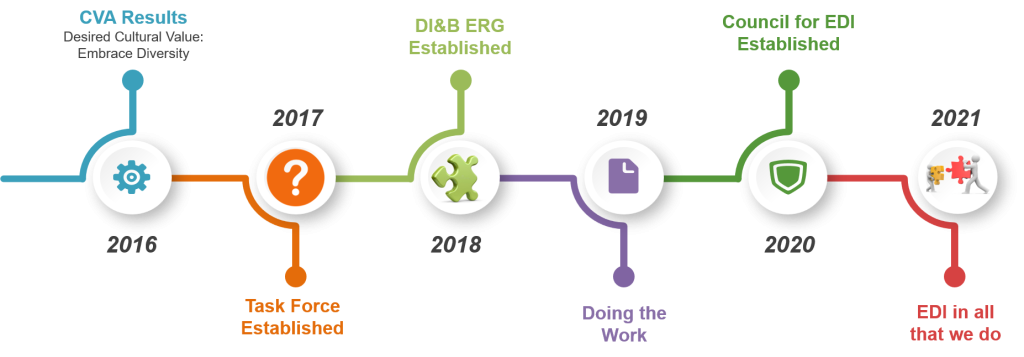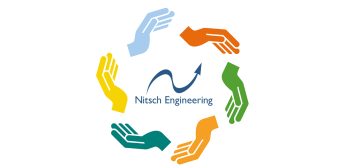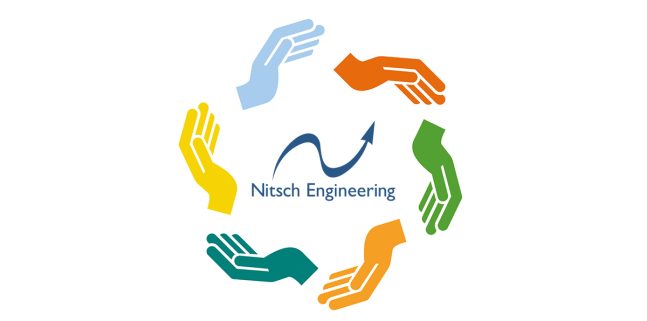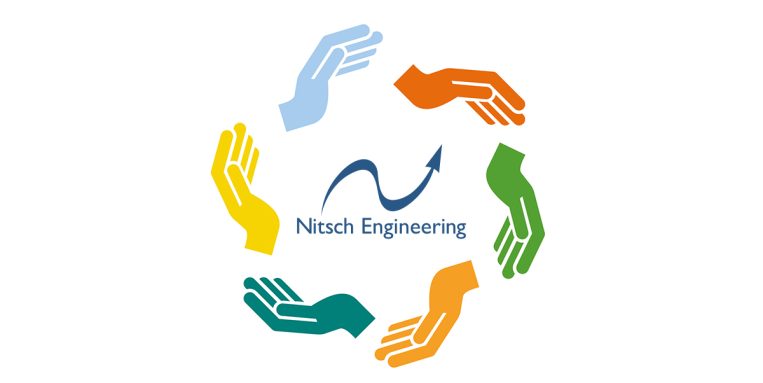Over the past year, conversations around equity, diversity, inclusion, and belonging (EDI&B) have become more prevalent in the world and at work. With that in mind, and with April being Celebrate Diversity Month, we wanted to take this opportunity to highlight some of the things Nitsch Engineering has learned since we intentionally started this work at a corporate level five years ago. Our goal in sharing this information is to provide some ideas to help firms who are still trying to figure out where to start. One thing to keep in mind as you read this is that every company is different. Our EDI&B efforts are very much aligned with our culture – and culture is unique to every company.
We’d like to make it clear that we are in no way subject matter experts on this process! We’ve invested in a lot of training, read a lot of books and articles, engaged in open and uncomfortable conversations with each other, and did and continue to do the work necessary for transformation. Lastly, we are committed to being on this journey for the long haul. We’ll continue to learn, grow, and pilot new programs or ideas, and we will learn from our mistakes to continue to move forward.
An Abbreviated Background
While Nitsch had embraced diversity throughout our history, particularly in the gender equity space, we recognized the opportunity to do more when our 2016 Cultural Values Assessment (CVA) showed that a few employees identified “embrace diversity” as a desired cultural value. We began to explore ideas for making our workplace more diverse, inclusive, and equitable; learn how we could take action; and deliver results that could make a difference both within our company and in our wider communities.

1. Determine Who Will Lead Efforts
Any successful initiative needs a passionate and well-informed leader! Whether you ask for volunteers or recruit someone to lead your EDI&B efforts, it’s critical to think about who will be responsible for driving progress. There are different ways to approach this, but we have found three types of leadership to be critical in this work:
- Employee leadership: Employee Resource Groups (ERGs) – voluntary, employee-led affinity groups that are organized around a specific topic – can provide critical ideas and energy for addressing EDI&B within a company. Our own DI&B ERG began all of the work that Nitsch has done over the last five years, and we are so grateful to those volunteers for hosting events and providing education to raise awareness on both an individual and corporate level.
- Corporate commitment: To make systemic change requires corporate support for the financial investments in training and education, assessments and remedial actions of both recruiting practices and current employee policies, and spending diversification to benefit smaller women- and minority-owned businesses. Our Council for EDI provides this support, working closely with the DI&B ERG to prioritize change.
- CEO champion: Finally, we have found that having our CEO as the champion for this work brings a lot of energy and makes a HUGE impact. The CEO drives the strategic vision for the company – and integrating EDI&B into that strategic vision makes it a clear priority.
Project Manager Michelle Callahan, PE, LEED AP BD+C, who co-chairs the DI&B ERG and sits on the Council for EDI, commented, “Leaders for equity and diversity initiatives need to take an intersectional and inclusive approach that recognizes and prioritizes the experiences of under-represented people. People who identify as allies or advocates need to act as a champion to amplify the voices of marginalized groups to push progress forward.”
2. Invest in Training
Resources exist to help understand how EDI&B can and should be integrated into a company. Investing in training for your EDI&B leaders will help them move things forward. Three programs that we found particularly useful were:
- Bentley University’s Diversity, Equity & Inclusion Certificate Program
- Boston Chamber of Commerce’s Transformational DEI Certificate Program
- Suffolk University’s Center for Restorative Justice Circle Training
Employee training around EDI&B topics reinforces their importance to everyone in the company, and is a critical part of raising awareness. Nitsch received excellent feedback from the mandatory Implicit/Unconscious Bias training that we held in 2018, which we recorded and have integrated into our onboarding process for new employees. We also recently held Bystander and Microaggressions training for all employees and intend to make this an on-going bi-annual training (alternating with the anti-harassment training that we have been holding for decades).
Human Resources Manager Lisa Dolan, SPHR, who co-chairs the Council for EDI, noted, “While some research suggests that making diversity training mandatory can bring out resistance from some employees, we approach EDI training as an opportunity to broaden awareness that is just as important as any other business training that all of our employees need to be familiar with to drive our culture.”
3. Identify Your Mission
Most people have the best of intentions when it comes to making change, but no one can do everything. Once your committees/councils/ERGs are set up, each needs to identify what their specific efforts will focus on. We’ve found that the process of writing a mission statement helps with clarifying the goals of the group, and provides important guidance and clarification for decision-making.
Project Engineer Anna Murphy, PE, who co-chairs the DI&B ERG, said, “Our mission statement provides a very clear focus for our ERG and helps us stay on track to make a positive impact. We identified our mission as, ‘Nitsch Engineering strives to provide a safe, respectful, and inclusive environment for all employees and the communities we serve. Our goal is to foster a sense of belonging and trust across the company and among individuals so that they may feel supported, seen, and heard. We will do this by providing educational opportunities around diversity and inclusion topics, creating safe spaces for conversations, promoting events that celebrate our cultural differences and the uniqueness of individuals, increasing access for employment to underrepresented communities, and raising awareness on biases.’”
4. Communicate, Communicate, Communicate
Communication is key for any important initiative. EDI&B leaders need to think about how they can best address their goals within their existing company culture. What do you want to communicate? What vehicles for communication exist that can be leveraged for new EDI&B content? Is there a need for a new way to communicate?
Think about what you’re trying to do – raise awareness, share information, or promote discussion – and remember words matter! Then choose a channel that supports that and be prepared to repeat your messaging often. A few methods that we have found to be effective have been:
- Letters from our CEO sharing or addressing important news.
- Intranet posts to raise awareness about issues.
- Articles in our internal employee newsletter to share fun or interesting information.
- Book clubs to promote growth through learning and discussion, with Nitsch providing books (in a variety of formats) to anyone who wants to participate. Some books we have read and recommend include: Blindspot: Hidden Biases of Good People by Mahzarin Banaji and Anthony Greenwald, So You Want To Talk About Race by Ijeoma Oluo, and How to Be an Anti-Racist by Ibram X. Kendi.
Director of Administrative Services Rosa Romero, who co-chairs the Council for EDI, commented, “In communications about EDI&B, it’s critical to focus on calling people in as opposed to calling people out. As we work to raise awareness and have courageous conversations, it’s important to remain focused on inviting people to learn, not shaming them for a lack of knowledge. This approach is critical to creating a safe space for people to grow and support each other.”
5. Create Safe Spaces for Courageous Conversations … and for Fun
Talking about EDI&B topics can feel uncomfortable for a lot of people, for a variety of reasons. It’s critical to create a safe space for people to talk about tough topics. What this looks like will vary a lot based on the company culture, and it may take time for people to feel truly comfortable sharing their thoughts.
After attending specialized training, our DI&B ERG began facilitating Community Circles to help build relationships and address issues. Circles are a restorative justice practice that has its roots in peace circles used for conflict resolution by Native Americans. Community Circles provide a safe space for employees to talk freely and share their thoughts on difficult subjects. These Community Circles have been well-received and attended, and have included topics for discussion such as the social identity wheel, implicit/unconscious bias training feedback, social unrest, the Black Lives Matter movement, and the rise in anti-Asian hate crimes.
Project Engineer Coleman Horsley, PE, who serves on the DI&B ERG and helps guide our Community Circles, noted, “Community Circles have been a really great way for employees at Nitsch to come together and speak their mind freely without the fear of interruption or judgement. Some of our Circles are less serious and allow us a view into our coworkers’ personal lives and favorite memories, whereas other Circles take on a more serious nature and allow an open space for tough conversations about racism, class divide, wrongful death, and more. These Circles have allowed me personally to learn so much about my coworkers and has resulted in a closer relationship with them.”
It’s important to remember that EDI&B conversations shouldn’t just be about pain. They should also celebrate the differences between people from different backgrounds, and bring people together around common interests. Whether that’s sharing favorite foods from your culture, watching movies or TV shows that showcase a different lived experience than your own, or talking about how you celebrate different holidays, giving people room to share their true selves with each other can be a joyful experience for everyone.
6. Measure Progress
There are different opinions about whether EDI&B initiatives should have numerical goals. While raw numbers won’t ever fully define diversity, as a company full of engineers, land surveyors, and planners who base their design decisions on data, we think that numbers provide the most unbiased way of measuring progress.
We recommend that firms begin by looking at your company’s diversity metrics (e.g., current employees broken down by gender, race/ethnicity, age, generation, degree level, etc.) to provide a baseline. From there, you can assess whether internal promotions and wages are equitable, whether employee turnover is focused within a certain group, and whether leadership and corporate governance reflects your workforce, amongst other things.
7. Commit to the Journey
Working towards equity, diversity, inclusion, and belonging is often a challenging and always an on-going process. The application of EDI&B theory can be very different in practice. It is clear that we will never be done – we will continue to evolve and grow in our EDI&B journey. Through our journey thus far, we have learned that addressing EDI&B is a systemic, multilevel, and nonlinear process. But if we commit to the journey – to learning and implementing in an iterative process that moves us forward over time – we can help make change.
President and CEO Lisa Brothers, PE, ENV SP, LEED AP BD+C noted, “Dr. Martin Luther King, Jr. famously said, ‘The arc of the moral universe is long, but it bends toward justice.’ And it is only through long-term, focused efforts – at both the individual and group level – that we can make that arc shorter. I encourage people at all companies to join Nitsch Engineering in continuing to explore biases and privileges, learn about the pervasive nature of institutional racism, and look at what we can do to help build a more equitable society.”



